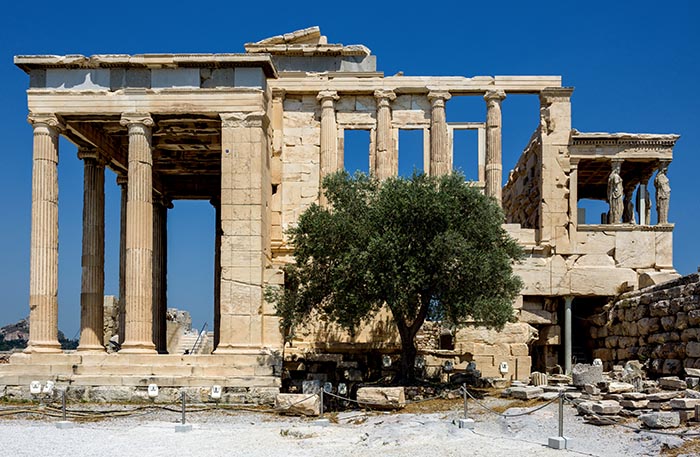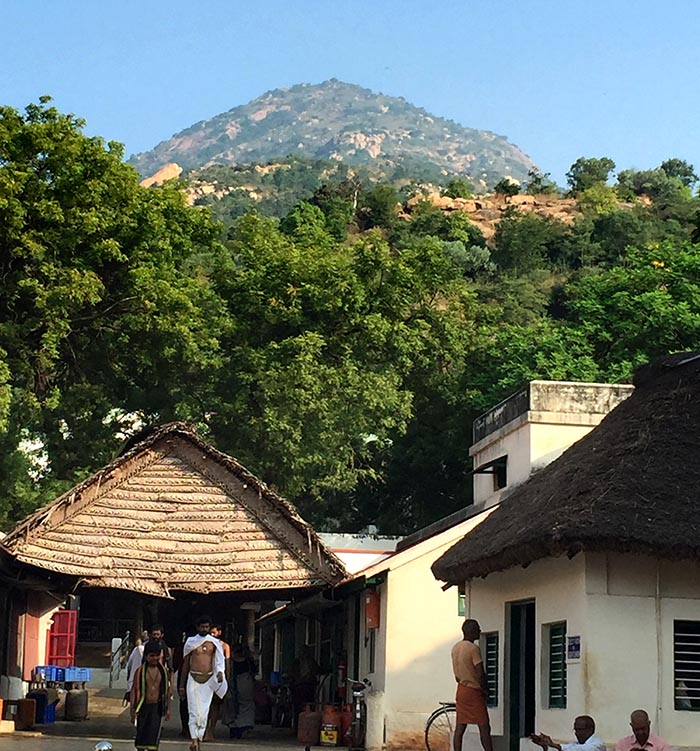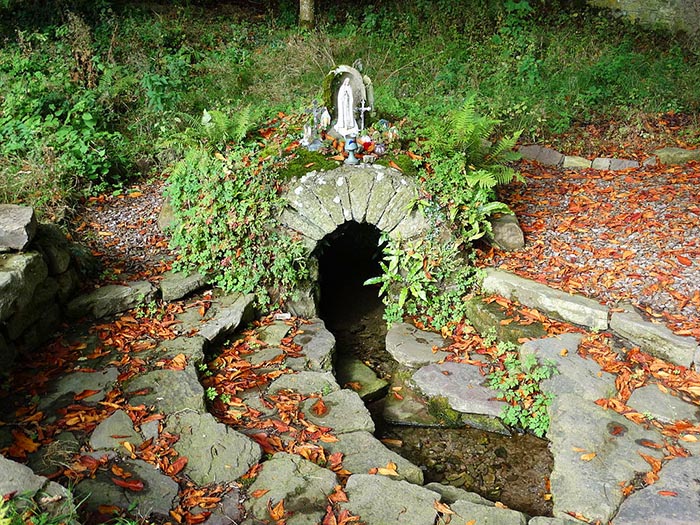News & Views

Sacred Nature complements The Matter with Things in a number of ways. For instance, the idea of relationship is also central to McGilchrist’s argument, but whilst his focus is on establishing its ontological primacy, Armstrong’s is more practical. She deals with ‘know how’ rather than ‘know that’. McGilchrist concludes his book with the advice that we should strive for what he terms ‘closeness’ in three areas: closeness to one another, closeness to nature, and closeness to Reality/God. Armstrong argues that closeness to nature is the most vital of the three, elaborating what it involves whilst at the same showing how it is bound up with a deepening connection with others and God, since nature is what binds us with God.
So how are we to know what our relationship with nature should be? According to Armstrong, we can learn from our own poets and the wisdoms that the sages and religions of the world have long been transmitting to us. These wisdoms are conveyed in myths. That we have been too long deaf to their teachings is explained by the triumph of rationality over mythos in western civilisation, she explains in her opening chapter. So she concludes: ‘Our first task is to appreciate the value of myth and understand how myths work.’ (p. 28)
Armstrong is perhaps uniquely qualified to survey the myths of both the Occident and Orient as an acclaimed scholar of comparative religion. Her span is wide. She draws on her knowledge of the Abrahamic religions: of Chinese Confucianism and Taoism; of Hinduism, Buddhism, Jainism and Zen; of shamanism; and also the Romantic poets such as Coleridge and Wordsworth. The wisdoms which myths transmit stretch back from the beginnings of the so-called Axial Age (900–200 BCE) to the present. However, wide as her scope is, she has little to say about the practices of the indigenous peoples of the Americas and Australia, though I suspect they would only strengthen her argument.
The contention of the book is that while beliefs and religions assume many forms, when it comes to their approach to nature there is a remarkable degree of common ground. This truth is not so much to be expressed as facts but as feelings. Science strives for objectivity, but Armstrong detects in the world’s myths an emphasis on emotions, on aesthetics, and on empathy. Proper relationship with nature, she maintains, is a matter of the heart rather than the head.
In essence, she understands the ancients to be telling us to approach nature as sacred, as holy. This is a near-universal wisdom, but she feels that an important exception is to be found within Judaism and Christianity. ‘The Hebrew Bible’, she notes, ‘does not focus on the sanctity of nature.’ (p. 11) In setting God apart as another (if very special) Being – a ‘distant reality’ (p. 65) rather than ‘Being Itself’ (sic) – Christendom came to believe that ‘Nature was no longer a theophany, a revelation of the divine; it was a commodity that must be exploited.’ (p. 14)
However, she admits that even within these traditions there were, and there remain, important exceptions to the desacralisation of nature – for instance in the approach of the Kabbalists within Judaism, and saints such as St Francis of Assissi within Christianity (see pp. 53–5 & p. 129). Nevertheless, the general approach of these religions contrasts significantly with the attitude of the third of the Abrahamic faiths, Islam. Nature in Islam ‘is a divine revelation equal to the Qur’an’ (p. 118):
Indeed, nature itself is the supreme example of Islam, the wholehearted ‘surrender’ to the divine that lies at the heart of Muslim spirituality: ‘Do you not realise that everything in the heavens and earth submits to God: the sun, the moon, the stars, the mountains, the trees and the animals’ (Qur’an 22:18). All creatures praise God simply by existing and doing what is ordained for them by nature. (p. 120)
For the mystical philosopher Ibn al-ʿArabi, Armstrong notes, ‘the natural world is the “breath of the Merciful” and everything in it is an expression of the divine sigh.’ (p. 86) Islam, she concludes, teaches that ‘Human beings should create societies that reflect the balance that enables the natural world to function harmoniously by acting towards one another with justice and compassion.’ (p. 123)

Practical Suggestions
.
However, Armstrong’s main purpose is not primarily the interpretation of the world’s great teachers and spiritual traditions: rather, she intends this book to be a guide to saving ourselves. Each chapter concludes with practical actions that the teachings she surveys suggest. She begins by urging us to re-evaluate our understanding of myth, maintaining that myth should not be judged as reporting facts but as offering guidance to right action (see pp. 27–9).
Then she exhorts us to make time each day to sit quietly and ‘register the sights and sounds of nature’ (p. 59) and so come to see ‘… the divine as an … inner presence that flows through all things.’ Hence, we can
learn how to revere nature in a positive, life-affirming sense. […] Above all, perhaps, we should embrace the neo-Confucians’ vision of humanity forming ‘one body with all things’. Awe at the natural world and unity between humanity and nature […] a vision based on empathy rather than power, partition and blame. (p. 154)
Her advice drawn from Hinduism is that: ‘Every day we should try to honour in our minds the holiness of every single natural object and person that we encounter.’ (p. 100) She detects similar wisdom given by Confucian sages who taught that: ‘We simply need to recognise the sacrality of everything around us and observe how the myriad things tirelessly support one another.’ (p. 145) Thus ‘instead of looking up to a distant heaven or deity to give his life meaning, the sage marvels at ordinary […] things on earth – a spoonful of water or a handful of soil.’ (p. 146) Coleridge’s Ancient Mariner echoes this sentiment: ‘He prayeth best, who loveth best All things both great and small; For the dear God who loveth us He made and loveth all.’ (quoted, p. 198). Interpreting the wisdom found in Jainism, she concludes that we should ‘[…] endeavour to reflect upon our behaviour – treading with caution, laying down objects with care, noting if we spoil or discard things.’ (p. 166)
Practising awareness like this goes further than contemporary mindfulness since we are asked to give meaning and value to what we experience. There is also a response required: we should daily ‘express our gratitude to nature’ (p. 136, and see Chapter 7 as a whole). A recent piece in Beshara Magazine about the Ainu people of Japan demonstrates just how important this has always been within the indigenous cultures (to read this article, click here).
All this should be complemented by a deepening understanding of ourselves. The ideal is to achieve selflessness, ‘kenosis, an emptying of the self’ (p. 101). She notes that ‘From a very early period, kenosis [a Greek term] was regarded as crucial not only to people’s spiritual life but to the entire world order.’ (p. 101). Armstrong finds kenosis praised in Taoism: ‘Is it not because the sage possesses no ego that he can thus establish his Self?’ she quotes from the Tao te Ching. (p. 104) It is also there in the Buddhist practice of anatta, ‘live as if the self did not exist’; (p. 104 & 105); in Paul’s teaching as in his Letter to the Philippians: ‘Always consider the other person to be better than yourself, so that nobody thinks of his own interests first, but everybody thinks of other people’s interests instead’ (2:2–4, quoted p. 107), and perhaps most explicitly in Islam where she points out that the name itself means ‘surrender’: “this is first and foremost a surrender of the ego; a Muslim is a man or woman who has made this existential relinquishment of self.” (p. 111)
Above all, Armstrong urges us towards an attitude of humility. ‘Every day,’ she recommends, ‘for just a few moments we should consider three things: how little we know; how frequently we fail in kindness to other beings; and how limited are our desires and yearnings, which so often begin and end in our self.’ (p. 115)

A Call to Action
.
Paradoxes are a feature of wisdom, as McGilchrist also points out. So after urging us to give up our sense of self, Armstrong ends by emphasising our individual importance: ‘We cannot simply leave the fate of the world in the hands of our political leaders; every single one of us has responsibility’ (p. 175) she believes. She cites the Confucian text The Great Learning [/]:
From the Son of Heaven to ordinary people, all, without exception should regard cultivating the person as the root. It can never happen that the root is disordered and the branches are ordered. (p. 175)
Armstrong’s book is a heartfelt call to action, for a revolution in our way of relating to nature. She has done a marvellous service in distilling the wisdoms of the ages. Surely it would be profoundly unwise not to attend to wisdoms shared so widely. Perhaps lying at the heart of all these wisdoms is the ancient wisdom ‘Know yourself’. But what does this mean? Armstrong is telling us that we need to attend not so much to what we are as to how we are – or at least, how we should be. We should be relating to nature with humility, empathy, compassion, awe and gratitude. When we do so we can expect a reciprocal response – reciprocity being an intrinsic part of any relationship – with nature in turn nurturing us, not subjecting us to plagues, famines, and a climate crisis. More directly and personally perhaps, anyone who practices what Armstrong recommends can expect to deepen their understanding of themselves and of God, since nature is a binding link with the sacred.
Sacred Nature was published by Bodley Head in June 2022.
Sources (click to open)
Dr Richard Gault has worked at universities in Scotland, Ireland, Holland and Germany, where he has taught and researched a variety of subjects, including the history and philosophy of science and technology. He is a long term student of the Beshara School and from 2015–2017 was principal of The Chisholme Institute in Scotland.
More News & Views
Don’t Take It Easy
Richard Gault is inspired by Michael Easter’s book The Comfort Crisis and explores the idea of ‘misogi’ during a 600-mile walk across Scotland
Book Review: ‘The Serviceberry’
Martha Cass contemplates the message of a new book by Robin Wall Kimmerer that advocates ‘an economy of gifts and abundance’
Book Review: ‘Conversations with Dostoevsky’
Andrew Watson engages with an innovative new book by George Pattison which explores Dostoevsky’s relevance in the contemporary world
Thich Nhat Hanh & the Poetry of Engaged Buddhism
Philip Brown presents the poem ‘Recommendation’ and comments on the potential of contemplative art to foster compassion
Introducing… ‘Perfect Days’ and ‘Nowhere Special’
Jane Clark watches two films with a contemplative theme
Book Review: ‘Irreducible: Consciousness, Life, Computers and Human Nature’
Richard Gault reviews a new book by Federico Faggin, one of the leading lights of the science of consciousness
FOLLOW AND LIKE US
——————————————
——————————————
——————————————
If you enjoyed reading this article
Please leave a comment below.
Please also consider making a donation to support the work of Beshara Magazine. The magazine relies entirely on voluntary support. Donations received through this website go towards editorial expenses, eg. image rights, travel expenses, and website maintenance and development costs.
READERS’ COMMENTS
1 Comment
Submit a Comment
FOLLOW AND LIKE US
It is good to read this article. It brings back to me the discomfort I have always felt when reading Notice to Cooks by Bulent Rauf. The idea that animals only reach their higher purpose in the human cookpot surely is questionable. It would be interesting to know what Karen Armstrong would say about this.